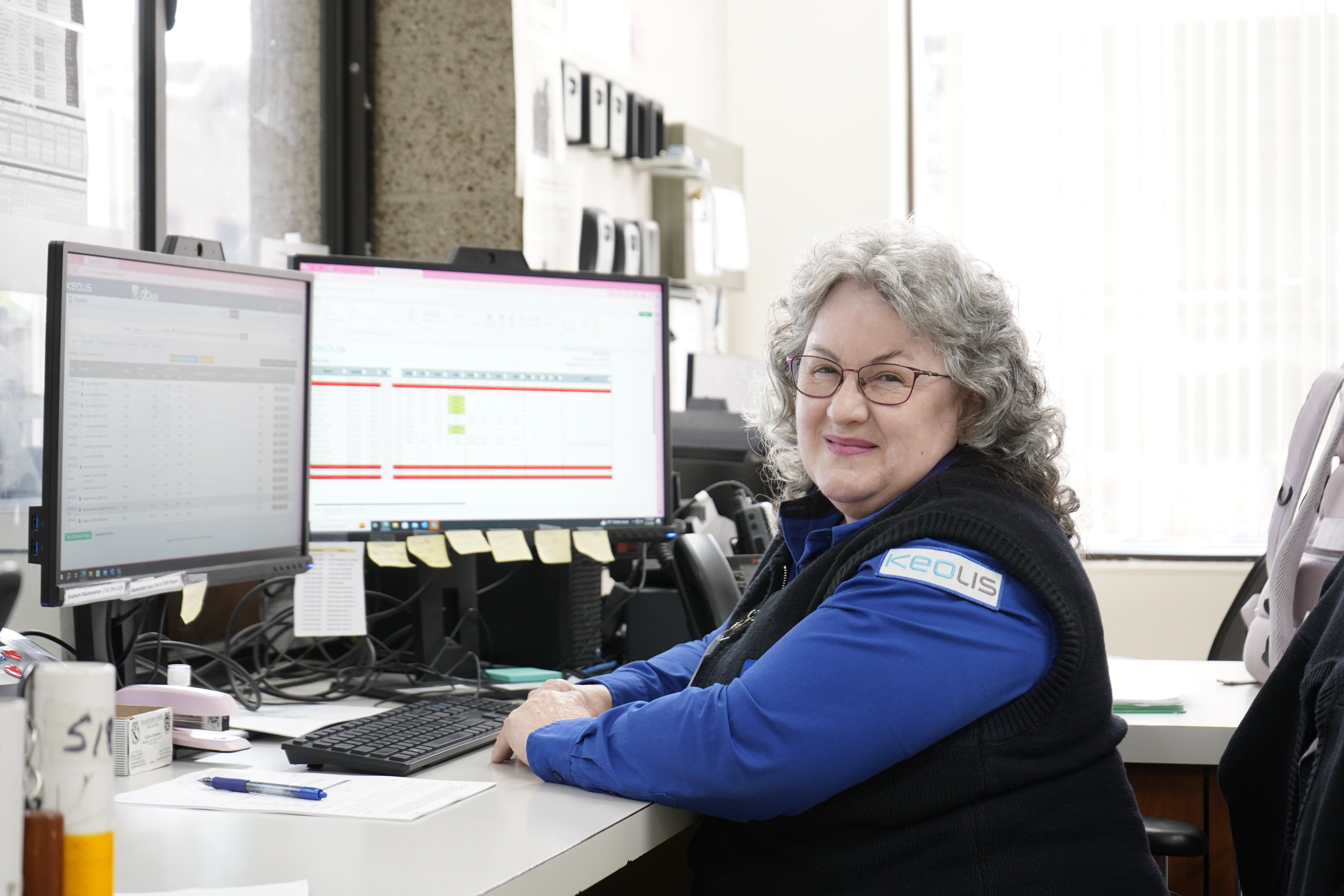Artificial Intelligence (AI) has become an increasingly frequently used tool that has impacted many industries and their processes, and public transit is no different. Its ability to analyze large datasets and adapt to real-time changes helps transit agencies address challenges like route optimization, energy efficiency, and resource allocation. While AI isn’t new, its growing use in transit highlights its potential to make transportation systems smarter, more efficient, and better suited to meet rider needs.
Key AI Applications in Transit
AI’s applications in transit are vast and varied, but a few stand out as especially impactful for the transit industry:
Route Optimization
By analyzing real-time data such as traffic congestion, road conditions, and rider demand, AI can create more efficient routes that minimize delays and save fuel. For riders, this means faster, more reliable service, and for transit agencies, it means cost savings and reduced emissions.
Fuel and Energy Efficiency
For electric and hybrid fleets, AI can be used to adjust routes, monitor energy consumption, and optimize vehicle speed, significantly improving overall energy efficiency. These adjustments not only cut costs but also extend the range of electric vehicles, making sustainable transit more practical and affordable.
Ridership Predictability
With the power of predictive analytics, AI can forecast peak ridership times and help transit agencies allocate resources more effectively. For example, if AI identifies that demand spikes at certain times of the day or during certain events, agencies can adjust schedules and deploy additional vehicles to meet demand, enhancing the rider experience.
Safety and Maintenance
AI’s predictive capabilities can also improve vehicle safety by tracking wear and tear patterns, suggesting maintenance before issues arise, and ultimately reducing breakdowns. This not only increases safety for riders but also extends vehicle lifespan, saving costs and reducing downtime.
Adapting AI to Transit’s Unique Needs
While AI holds promise, there’s no one-size-fits-all solution. Each transit system has unique characteristics, and AI applications must be tailored accordingly. Developing effective AI strategies requires collaboration between transit agencies, technology experts, and community stakeholders. Human oversight remains critical to ensure AI systems are aligned with local needs and deliver meaningful results.
SmartTransit AI and CARTA’s Pilot Program
One of the most exciting real-world applications of AI in transit today is the SmartTransit AI initiative. As part of a $130 million grant from the U.S. Department of Energy (DOE) and the Department of Transportation’s (DOT) Federal Transit Administration (FTA), SmartTransit AI was created to address critical issues in public transit such as rider demand analysis, traffic congestion, and vehicle energy use.
In March 2024, the Chattanooga Regional Transportation Authority (CARTA) in Tennessee launched a pilot program to enhance energy efficiency and affordability within its public transit system. Through this program, CARTA partnered with Vanderbilt University and SmartTransit AI to create a customized AI platform tailored to Chattanooga’s transit needs. The software developed by SmartTransit AI analyzes rider demand patterns, assesses real-time traffic conditions, and monitors vehicle energy use, allowing CARTA to optimize its routes and allocate resources based on actual data.
This AI-driven approach offers potential benefits, such as reducing fuel consumption, lowering operational costs, and providing a more convenient transit experience for riders. The SmartTransit AI pilot is an example of how AI in transit can be implemented with a specific, localized approach, with the findings likely to influence other transit agencies nationwide.
Looking Ahead: The Future of AI in TransitAI continues to offer new possibilities for public transit. From reducing operational costs to creating more sustainable systems, its potential is vast. As transit agencies explore and implement AI-driven solutions, collaboration and innovation will be key to success.
The future of public transit isn’t just about adopting new technologies—it’s about combining them with human expertise to create systems that are smarter, safer, and more accessible. AI has an important role to play in making this vision a reality.
To discuss specific needs and solutions, contact Keolis North America at Media@KeolisNA.com or discover our full AI white paper here for more insights: https://hubs.la/Q02WdqyK0
